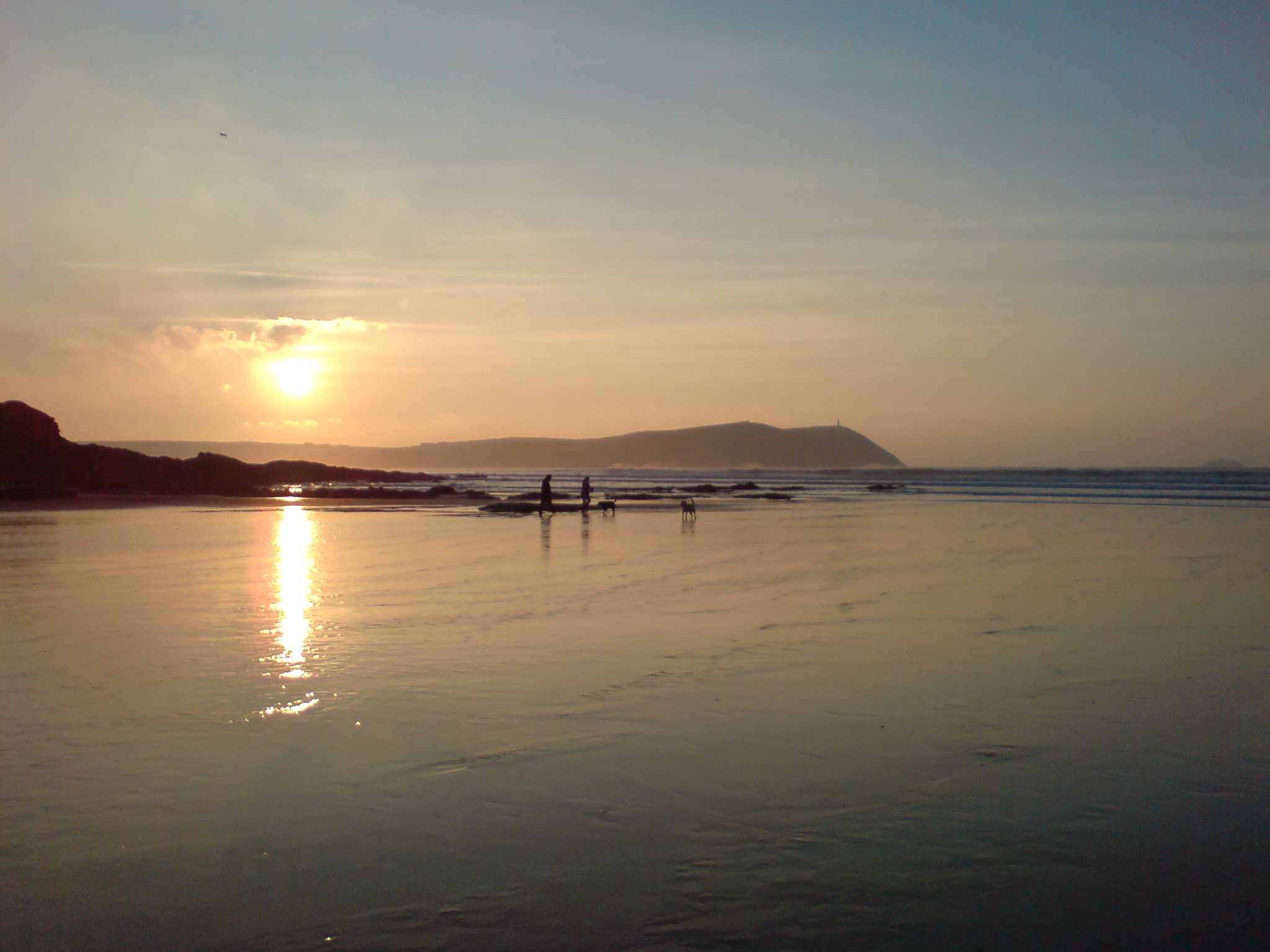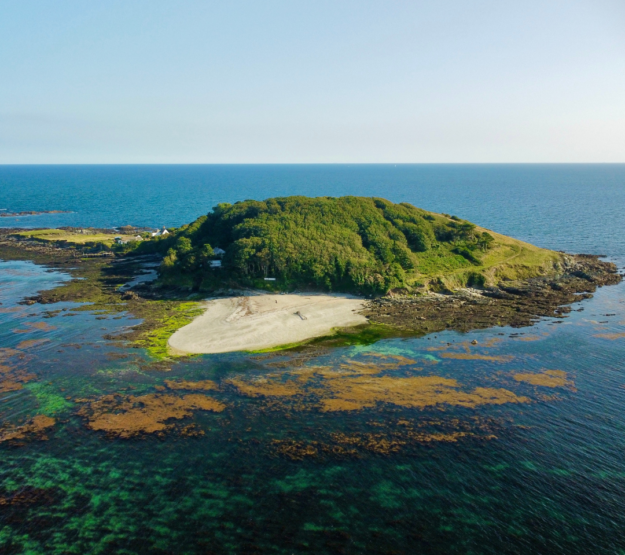From beaches and boats to character and charm, Cornwall has many things in abundance, but today we’re looking at its wildlife. The county’s coastal location brings with it a whole host of marine life, and there are plenty of animals to be seen inland too.
But where should you go to catch a glimpse of Cornwall’s wildlife, and what sort of creatures can you expect to see? We’ve taken a closer look at some wildlife watching hotspots the county has to offer.
What kind of wildlife can I see in Cornwall?
Whether you’re interested in classic British animals or aquatic creatures that you don’t often come across at home, there’s plenty to keep even the biggest nature lover enthralled in Cornwall.
The county is home to badgers, foxes, and beavers, as well as rabbits and hares. On the moors, you’ll find horses and ponies, and in the skies, a variety of bird life including birds of prey – the likes of peregrine falcons and sparrowhawks can be spotted even in busier areas, like our home town of Padstow!
The coast is teeming with marine life, with seals, dolphins and sharks all sighted in the surrounding Atlantic Ocean – as well as whales and turtles on occasion. Various fish species and molluscs make Cornish waters their home, living alongside marine birds like puffins and cormorants.
Where to go wildlife watching in Cornwall
If you’re in the area and keen to spot creatures great and small in their natural habitat, here are some of the best places in the county to look.
Lizard Point
The southern end of the Lizard Peninsula is home to abundant wildlife, thanks to its remote location, mild climate and distinctive geology. Visitors regularly spot dolphins, harbour porpoises, basking sharks, sunfish, seals, and even the occasional whale. Seabirds are also plentiful in this spot – it’s said to be one of the best places in the UK to see them.
The Wildlife Watchpoint, at the tip of Lizard Point, can be found during the summer months, manned by volunteers who are passionate about the local nature and keen to help guests appreciate it too. Here you can borrow binoculars from their hut and hear about what’s been spotted that day.
You might see: Grey Seal, Bottlenose Dolphin, Risso’s Dolphin, Common Dolphin, Harbour Porpoise, Sunfish, Basking Shark, Minke Whale, Puffin, Tern, Cornish Chough, Gannet
Location: The Lizard Peninsula
Puffin Island
Puffin Island is close to Padstow, and is well known for playing host to the seabirds that give it its name. Puffins can commonly be found there during their breeding season between April and July, where they raise their young (adorably called ‘pufflings’!). The secluded location allows them easy access to the small fish that they eat, and enables them to feed their chicks away from land predators.
You may be able to see them from the headland close by, but its best to get a boat trip or sea safari to get a better look and appreciate their character! Our neighbours at Padstow Sea Safaris offer an excellent Puffin Safari that visits the island.
You might see: Puffin, Common Dolphin, Bottlenose Dolphin, Risso’s Dolphin, Harbour Porpoise, Cormorant, Razorbill, Guillemot
Location: Padstow, North Cornwall
Godrevy Point
Animal lovers shouldn’t miss a trip to Mutton Cove at Godrevy Point, which is home to a large colony of grey seals and makes for a particularly magical experience. Early winter brings with it lots of fluffy seal pups, but almost all year round the colony can be seen when the tide is low enough, so your chances of seeing them are very high no matter when you’re visiting.
It’s worth noting that there is no access to the beach, which allows the seals to relax safely on the sand along the shore. Remember that even observing from the cliffs above can disturb them, so move slowly, try not to make too much noise, and respect the area so as not to cause them any distress.
You might see: Grey Seal, Atlantic White-sided Dolphin, Common Dolphin, Bottlenose Dolphin, Fulmar, Guillemot
Location: St Ives Bay, West Cornwall
Land’s End
It’s not only incredible views you can find at mainland Britain’s most south-westerly point. The area is also a fantastic spot for birdwatching, and well known for giving visitors the chance to spot kittiwakes, gannets, razorbills and the famous Chough, a bird once extinct in Cornwall.
It’s not all birds either; there’s plenty of opportunity to see basking sharks, grey seals, dolphins, and even the occasional whale. If you want to get closer to the action, there are wildlife spotting boat trips available here, allowing you to take a closer look at sea level.
You might see: Basking Shark, Grey Seal, Falcon, Chough, Gannet, Bottlenose Dolphin, Common Dolphin, Mike Whale, Orca, Leatherback Turtle
Location: Penwith Peninsula, West Cornwall
Looe Island
This stunning island off the south coast of Cornwall is a nature reserve, managed by Cornwall Wildlife Trust. Accessible only via official boat trips from Looe Harbour, it’s a popular but tranquil spot for spotting seabirds, as well as a vast array of butterfly species in its wildflower meadows and grasslands. For a 9 hectare area, there’s a real variety of habitat types, from woodland to reef.
When visiting, take the 1km self guided walking trail to explore some of these different habitats – perhaps pausing along the way to say hello to the grazing sheep who live there. Bear in mind that a great deal of effort goes into protecting this special place for the benefit of the wildlife; dogs, drones, and fishing are not allowed.
You might see: Red Admiral Butterfly, Speckled Wood Butterfly, Meadow Brown Butterfly, Silver-Washed Fritillary, Hummingbird Hawk-Moth, Grey Seal, Shetland Sheep, Black-Backed Gull, Oystercatcher, Shag, Cormorant
Location: Looe, South East Cornwall
Pendennis Point
One of the most accessible wildlife watching spots in Cornwall, Pendennis Point offers a stunning panoramic view of Falmouth Bay and the great variety of sealife that make its waters their home. With everything from seabirds to sharks known to frequent the area, you may even spot a small number of seals lying on some of the rocks that emerge from the water.
You might see: Cormorant, Razorbill, Guillemot, Shag, Grey Seal, Common Dolphin, Harbour Porpoise, Grey Seal
Location: Falmouth, Mid Cornwall
Bodmin Moor
This Area of Outstanding Natural Beauty offers fantastic walking routes, and even pony trekking, but it’s not just time in the outdoors you can enjoy along the way. Bodmin Moor is home to over 1000 horses and ponies who can be seen grazing and wandering free – although they are actually owned by local farmers.
However, there’s also plenty of wildlife residing in this vast area (the most southwesterly upland area in Britain), including red deer, otters, and rare butterflies. Twitchers will have opportunity to see numerous birds who make the rich, varied landscape their home; skylarks, curlews, warblers, redstarts and more.
You might see: Otter, Red Deer, Marsh Fritillary Butterfly, Buzzard, Stonechat, Wheatear, Golden Plover, Skylark, Warbler, Redstart, Curlew
Location: Bodmin, North Cornwall
Cape Cornwall
At the point on the Cornish coast where the Irish Sea and Atlantic Ocean meet is Cape Cornwall, whose clear waters and rugged terrain provide a haven for wildlife. Situated on the South West Coast Path and four miles north of Land’s End, the best way to explore this location is exactly as some people arrive at it – by walking! A variety of seabirds, fish and marine mammals can be seen here, either from the summit (where the views are vast, but high) or from a lower path which is closer to the water.
You might see: Oceanic Sunfish, Bottlenose Dolphin, Risso’s Dolphin, Common Dolphin, Bluefin Tuna, Minke Whale, Humpback Whale, Harbour Porpoise, Basking Shark, Razorbill, Gannet, Shag
Location: Penwith Peninsula, West Cornwall
River Camel
The River Camel and its tributaries wind their way across most of North Cornwall, joining the sea in Padstow Bay and providing the setting for many brilliant nature and leisure experiences along the way. Popular for sailing, fishing and birdwatching, there are three birdwatching hides, from which a variety of bird life can be spotted, including kingfishers, grebes and other aquatic birds.
During a walk or cycle along the Camel trail you may also encounter deer, or if you’re very quiet and lucky, even otters, for the river is an important refuge for this shy and rare mammal.
You might see: Otter, Red Deer, Roe Deer, Salmon, Kingfisher, Great Crested Grebe, Grey Plover
Location: North Cornwall
Of course, these aren’t the only places to spot wildlife in Cornwall, and you’ll likely be surprised by just how many species you can encounter on your holiday here without needing to travel the length and breadth of the county. Something as simple as rockpooling at the nearest beach can provide the opportunity for encounters with creatures like the Cornish Sucker Fish, as well as crabs, prawns and other species.
There are also organisations that allow you further opportunities to find out more about Cornwall’s wildlife. The Cornwall Beaver Project offers guided walks at a reserve on Wood Valley Farm, where they released two adult beavers in 2017 in order to reintroduce this once native animal to Cornwall.
Further south west, the Cornish Seal Sanctuary rescues and rehabilitates seals and other marine wildlife, providing care for sick and injured animals before releasing them back into the wild. You can visit the sanctuary to see the workings of the team there and learn about the seals and their stories. The Cornish Birds of Prey Centre has a similar mission, but focused on mistreated and injured birds of prey, and is well worth visiting for a closer look at its majestic residents.
And in our home town of Padstow, North Cornwall, the National Lobster Hatchery gives visitors the chance to see lobster babies, giant lobsters and a behind the scenes look at their marine conservation work.
Feeling inspired to get out and explore everything that Cornwall has to offer? If you’re looking for holiday properties in Cornwall for your own trip to the area, we’re sure we’ll have the one for you.












